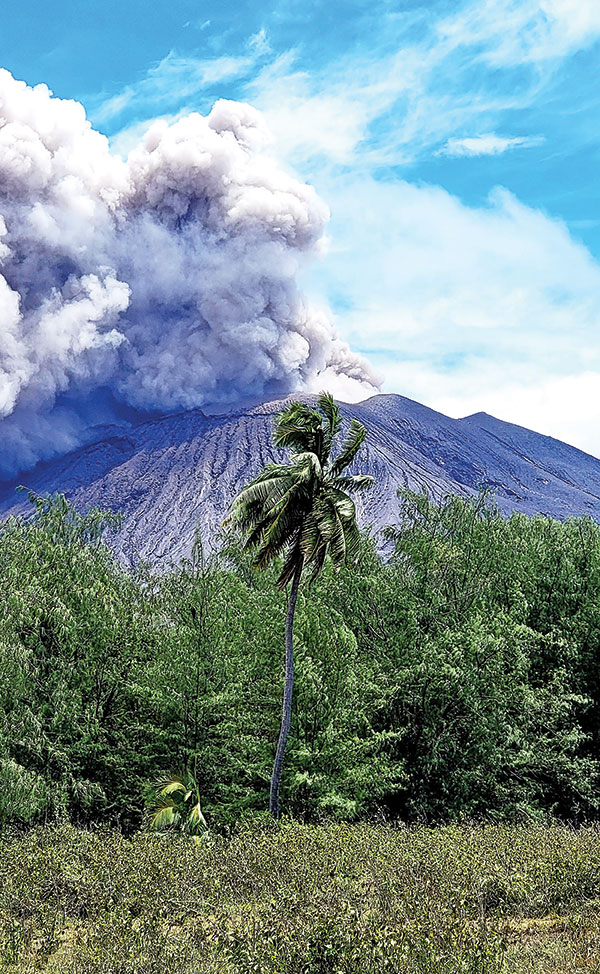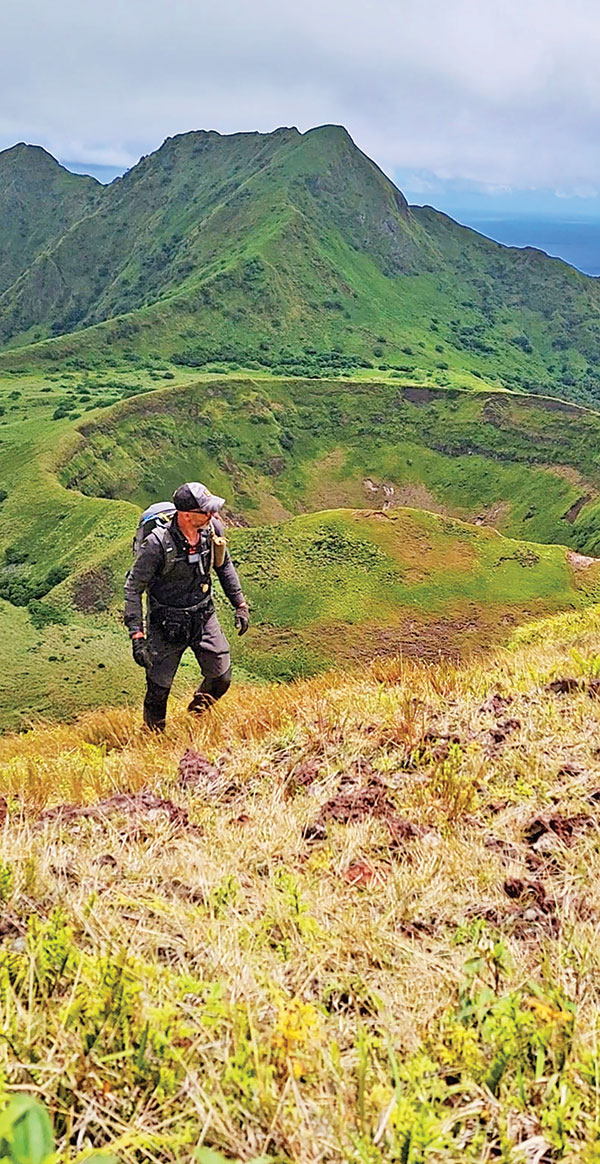Seeing Pagan volcano awaken

The plan was to do what’s called a “traverse exploration” of Pagan island, starting from the south side and going north. When Vladislav Melnik was dropped off on the south side of the island, the volcano on the north side was just emitting smoke but then, after a few days, “it started to release a lot of ashes [sic] with force and non-stop roaring sounds.”
To Melnik, it sounded like a jumbo jet taking off. “…The experience of watching the volcano erupt from a distance was amazing as I find it beautiful to see how nature works,” he said.
Melnik was able to take lots of pictures that, once he returned to Saipan, he uploaded to his Facebook page, showing grey ashfall covering large expanses of Pagan.
Early this month, the U.S. Geological Survey upgraded the Aviation Color Code/Volcano Alert Level for Pagan volcano to ORANGE/WATCH, an indication of escalating unrest with increased potential of eruption. It just so happened that Melnik, who was on Pagan at that time, was actually on hand to see the increasing volcanic activity. At that time, more than 10 Pagan residents have already been evacuated to Saipan, which is five islands away (about 192.6 miles), by the CNMI government to ensure their safety.
By the time he got to Pagan, Melnik said there were only two people on island that kept radio contact with Mayor’s Office of the Northern Islands. “I’ve been told that they have been waiting to be evacuated,” he said.
Before the Pagan Island lockdown, Melnik rode with a group of local fishermen headed to Maug and was dropped off at the south side of the island. “Having learned that several fishermen were headed to Maug island, I decided to take that as an opportunity to go to Pagan. …I have been to Pagan many times as I admire its perfect landscape and, as a nature lover, it is a place where I find endless freedom,” he said.
Melnik assures that he is not being reckless, saying that when he has trips to the Northern Islands, he makes sure to check the weather and sea conditions and even updates himself on any volcanic activity. “Before the trip to Pagan, I was on Rota and heard about an earthquake that hit near Farallon de Medinilla. That was also when I found out that Pagan was showing signs of activity from friends who were camping on the island with their families,” he added.
Mt. Pagan or the North Pagan volcano is 570 meters high and the last known eruption was in 2006. Its most dangerous eruption, though, was in May 15, 1981, because there were hundreds of residents with their families that were evacuated and brought to Saipan. Only a handful of people from the Northern Islands Mayor’s Office stayed behind to protect projects like maintaining water tanks, cleaning the airstrip, accommodating former residents who visit and fending off illegal fishermen. All these people have now been evacuated temporarily due to volcanic activity.
South Pagan, where Melnik started his ascent, is 548 meters high and has an elongated summit that contains four craters. This part of the island is considered dormant as historical eruptions of Pagan only took place in the north side. Still, Melnik said that during his way up to the summit of south Pagan, he noticed a few faults on the ground “that spewed very hot steam and that forced me to change my original route plan.”
Pagan Island is also the home of World War II artifacts when the Japanese occupied the island to build an airstrip in 1935. Today, you will find a fallen Japanese fighter plane by the runway, parts and pieces of tanks and ships, and a monument that honors fallen Japanese and American soldiers by the ocean.
“I’ve been to Pagan multiple times and I can say that even after a couple of volcanic eruptions since WW II, there is no historical object that was destroyed by the volcano. It could be because of the distance that lava flow couldn’t reach the areas where these objects are and I hope it remains that way,” Melnik said.
“I’m not a geologist, but it’s obvious that everything in this world is inter-connected. So it is a reasonable thing to be well prepared for any scenario and try not to make any hasty mistakes for which human lives would pay dearly,” he added.





